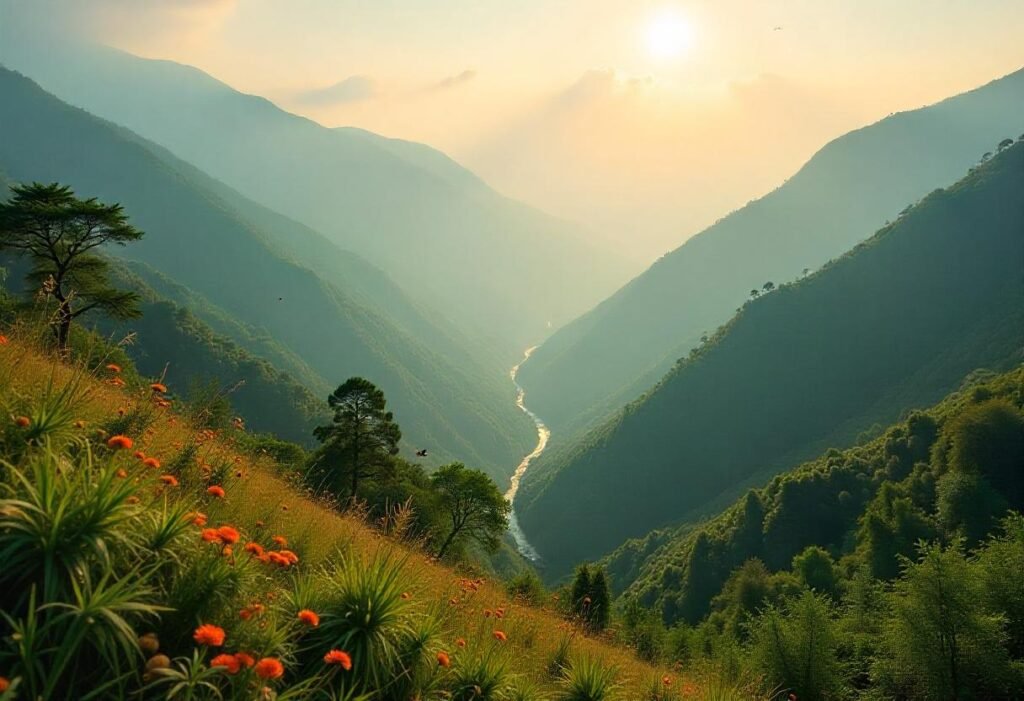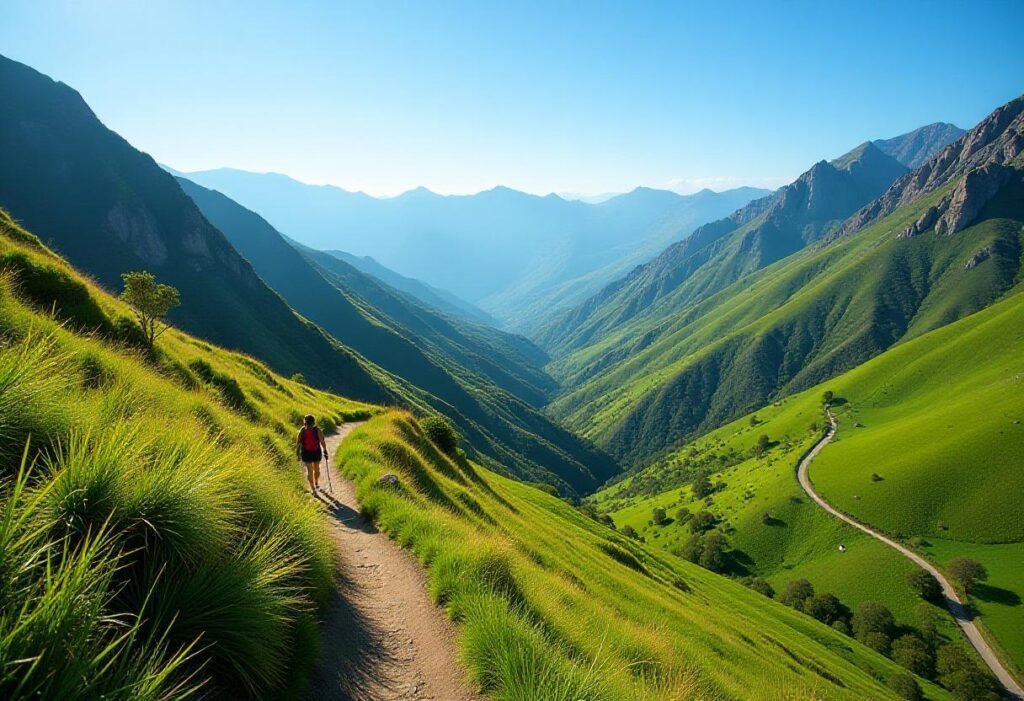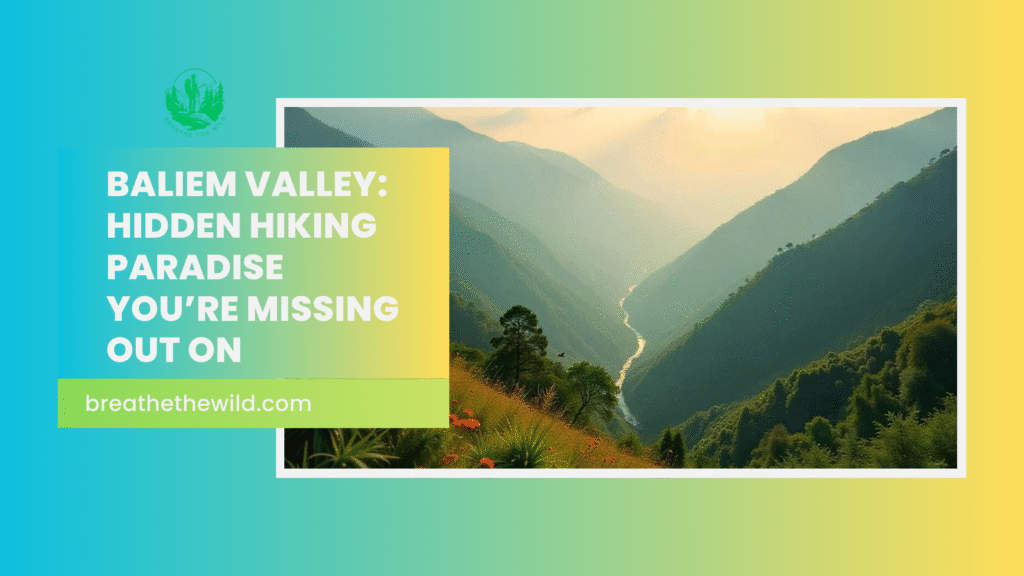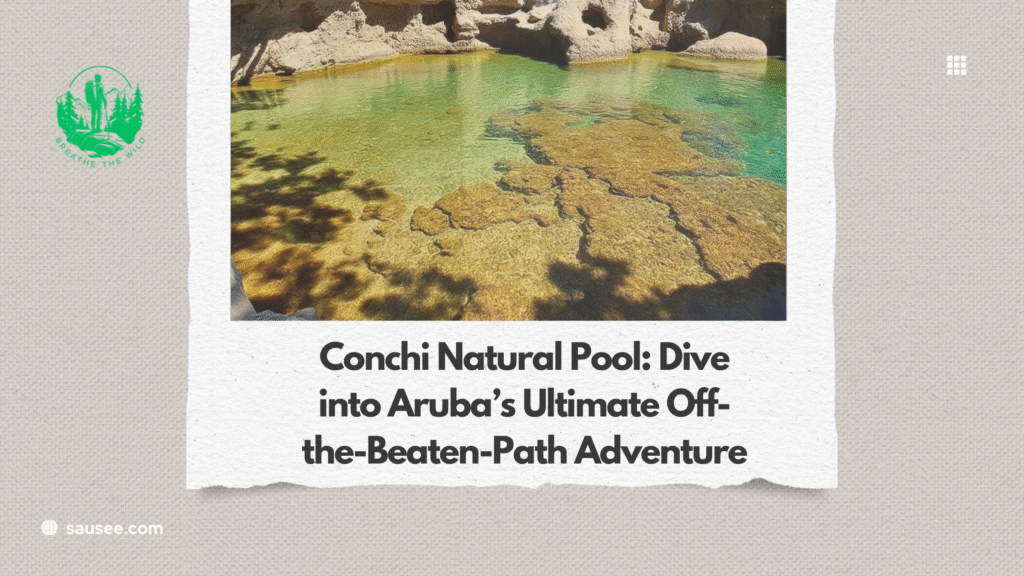Table of Contents
Introduction

Along the retreat lines in the rocky highlands in Indonesia, Papua, Baliem Valley is only one of the destinations that most of the tourists forget, as they leave it out as they miss it. It is a single-time wilderness and an ultimate visit for nature lovers, tourists, and hikers. Baliem valley is not only a beautiful retreat but a backcountry adventure; it is a trip through which one gets a view of the last wild place on the planet.
You can walk along jungle trails, have a chat with the very friendly local Dani people, or dine out with a super friendly local in the valley. Baliem valley is a bit more than a jungle hiking paradise you didn’t even realize you wanted.
Where Is Baliem Valley? How to Reach This Remote Highland Gem
Baliem Valley is located in the middle of the Papua Highlands mountainous and isolated region of the Indonesian province in the easternmost province. It gives a lost world feeling in which time has come to a standstill and is surrounded by steep mountains and vast forests.
Visitors must fly to Wamena, the only town in this valley. The most frequented and simplest path is the one towards Jayapura, the capital of Papua, which could be easily reached with the local airlines that make everyday flights there. Some of these flights stop over en route to Jayapura at either Jakarta or Makassar. The trekking tours commence in nature, most likely outside, or rather circular town of Wamen, or in clothes.
Tips: To travel somewhere outside Wamen, you will require a travelling permit (Surat Jalan), which you can obtain at the local police office. It can be arranged in situ with the help of a guide or a receptive tour company. Expect low-fi Wi-Fi, little in the way of banking, and extremely primitive infrastructure; all this is what will make the experience even better.
Hiking in Baliem Valley: What Makes It a Trekker’s Dream
Hiking in Baliem valley is not just a physical condition issue, it is a face-to-face experience in the wonderful nature and the clean culture. Usually, the treks last 2-5 days, along Dani tribal villages, misty mountains, swishing grass, and bright flowing rivers.
Trails vary in grade and there are easy walks along valleys and other stony up on ridges, along steep climbs and muddy paths. Day-to-day hiking is 10-15 km (speed of the path, weather).
Top trekking highlights include:
- Kurulu to Kilise: Excellent location for people who have never travelled before but want to find some culture and landscapes.
- Wamena to Angguruk: This is the more challenging trek; this trek takes a couple of days with good views.
- There are salt springs, mummy villages, and hanging bridges as photo opportunities.
Such a journey can only be undertaken by adventurous tourists who would like to taste their voyage in an unplugged, raw, and nourishing vein, choosing to go way off the track.
Meet the Dani People: A Cultural Trek Like No Other

The other unforgettable activity of Baliem valley involves a meet and greet with the Dani folk, one of the most popular indigenous groups in Papua. Since it is famous because of the different mode of dressing (learners to wear koteka, or penis gourd), the salt rituals, and the tribal practice of war, through war dances, the Dani give categorical ideas about what has been practiced over the generations.
Tourists used to spend overnight in honai (thatch-roofed huts) and cook and share with a local family. Such encounters lead to an intentional sharing of cultures and knowledge of subsistence farming, religious values, and indigenous practices that are of great importance.
To engage respectfully:
- Never ask permission.
- In case of home visits, take small gifts (school stationery).
- Never ask any taboo kind of questions or gestures- your guide can enlighten you on the aspects of etiquette.
Top Multi-Day Treks: Unforgettable Itineraries Through Baliem Valley
To experience Papua in the highlands to the fullest, travelers simply need to explore the highlands on a multi-day trek through the Baliem Valley, and the magic is in it. Perhaps the most well-traveled is the Kurima-Hitugi-Sogokmo loop, also a two- or three-day circuit, that combines a measure of scenic, as well as cultural, interest. It is a hike that takes you across beautiful villages of Dani, on hanging bridges, and by green terraced farms. It is an excellent option when one would like to have a comprehensive introduction to the region.
More experienced hikers could take longer trails like the one now starting in Kurima and passing through the Baliem River Valley and finishing in Jiwika. It normally takes four to six days, and can expose you to remote mountain ridges, fast-flowing rivers, and nights in secluded homestays, frequently with traditional Dani families. En route, you will pass by stone-age salt springs, a ruined mummy village, and jungle roads that seem as if time has avoided passages through. The trails are bare bones, but the spoils more than make up the difference: Cultural exposure, beautiful scenery, and rough-around-the-edges adventure are quite memorable.
Lodgings are basic and not fake. A majority of the trekkers use primitive homestays organized by the local guides. In very remote locations, you can be required to bring camping equipment and expect to be in an off-grid situation.
Check Out: Wae Rebo: Discover the Hidden Trekking Gem That Will Change Your Life.
When Is the Best Time to Visit Baliem Valley for Hiking?
The right choice of the season during which the hike is made to Baliem Valley may also become an excellent precondition for the overall impression. The most recommended dry season for people can visit is the period between the months of May to September. During the months, weather is more predictable, the paths are dry, and they are easier to see, hence perfect to go hiking and take photos. These two months are ideal in particular and slightly busier due to festivals and holidays.
Conversely, the wet season that runs between October and April is more difficult. Trails get slick, and fords in streams can be hazardous because the water is higher. Dense clouds may block the sights of the magnificent highlands, and the overall conditions of the trek are harsher. But if you want a more personal approach to nature and do not mind the extra work, you can go hiking during the wet season.
This is the time to visit it, in case you can; particularly, around August, when the Baliem valley festival is held. It is at this point that local tribes come out to do dances, mimic battle, and perform rituals. Participants receive a rare chance to get to know the cultural vibrancy of the region, and it is the same period when the accommodations are filling up fast, hence advance preparations are necessary.
What to Pack: Essential Gear for Hiking in Baliem Valley

Before one ventures on a trekking tour to Baliem Valley, it is advisable to collectively pack light since there are minimal amenities and stores beyond Wamena. To start with, hiking boots that are strong and waterproof are necessary in bad, rugged terrain, muddy, and rocky trails. Wear breathable clothes; use a moisture-wicking fabric, and carry several layers to match the changes in temperature during ascents or descents.
A good raincoat is essential because, even in the dry season, heavy downpours may take place. One should bring a headlamp or flashlight (especially when in the traditional homestays that have a few lights). Another important factor is water, so don t forget to take a portable purifier or something like purifying tablets as well so that you remain hydrated in a safe way all through your trek.
Additional of them are insect repellent to avoid mosquito bites, common use medicine, energizing snacks, and a camera that will help to capture the lifelong images and cultural experiences. Given that ATMs are a long way away, it would be prudent to have some cash in your pockets to last the length of the trek particularly in small bills.
Travel light but everything in place. It is a full-on, sometimes tough hike, and each pound you have with you will be something you wish you never had on your remote hiking adventure. Whether or not you are carrying your own pack or are paying a porter, clever packing will allow you to enjoy and relax on your trip.
Conclusion: Why Baliem Valley Should Be Your Next Adventure Destination
Baliem Valley offers much more than a trekking site, it is more of a journey back in time, a cultural experience and nature paradise in one. This remote paradise still has few visitors despite stunning countryside landscapes and a rare insight into the way of life of the Dani people, living deep in the Papua Highlands. Whether it is hiking through the villages in the old days, walking across the jungle suspension bridges or writing tribal ceremonies and waking up in the faraway mountain homestays, the Baliem Valley is full of the sense of reality.
Baliem Valley is conspicuously untouched unlike the more touristy Indonesian trails. It is not very commercial so you are guaranteed authentic experience, untouched adventure, and memories that will stay with you forever. Whether you are a hiker or a cultural explorer or a person who is simply willing to reconnect with nature and humanity in purest form, you are bound to be changed by Baliem Valley. Put on your boots, open this mind, and prepare to go on a journey that only few of the people ever go to but no one ever forgets.
For more info: Click Here.
FAQs About Baliem Valley
1. Are conditions safe to come to Baliem Valley?
Yes, Baliem Valley is rather safe among the travelers, at least who travel with local guide. The Dani have a reputation of being extremely friendly and often adventure tourists visit the area. But it is far away in a remote location so it is important to pack enough provisions, prepare ahead and update oneself on local conditions.
2. Is permit required to visit Baliem Valley?
Yes, visitors are required any travel permit called as Surat Jalan to enter the Baliem valley area. This permit can be obtained either in Jayapura or Wamena by going to the local police in charge. When applying you should take along several copies of your passport and visa. This process can be done with the help of local guides or tour operators.
3. Is it possible to hike in Baliem Valley by self-drive?
Although technically speaking, you can get a hike even without a guide, you will most certainly want to have one. Many tracks are not marked, terrain is demanding, and English is hardly spoken in the country. Local guide will not only accompany you and assist in navigation and translation but also give you cultural insight and will connect you with local families where one can stay overnight.



